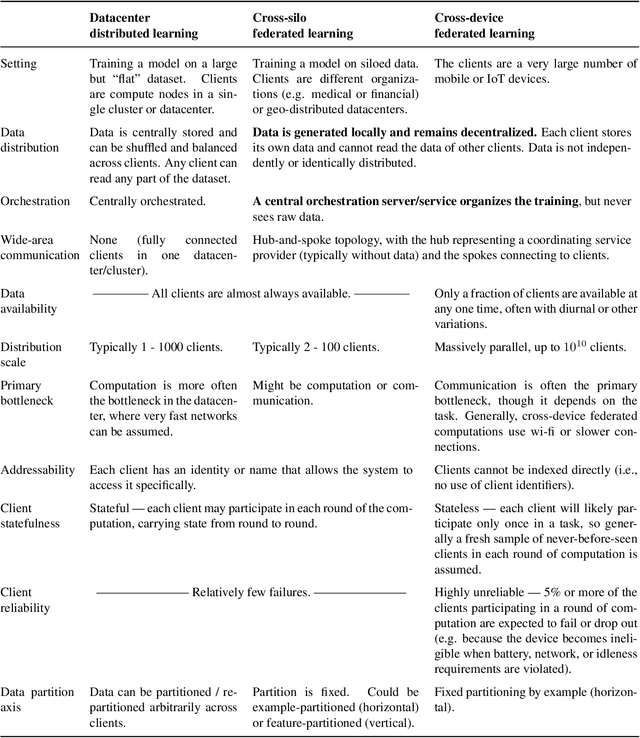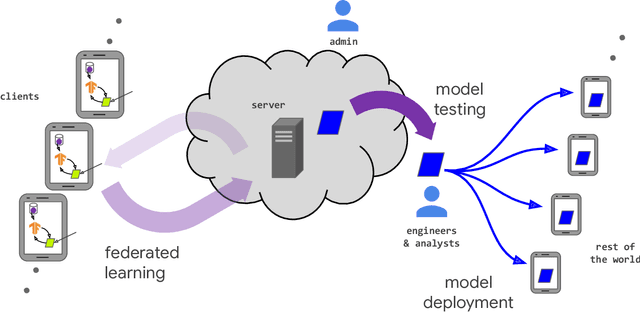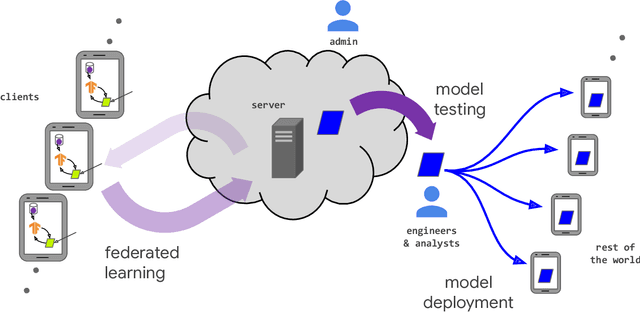Aleksandra Korolova
LiveCodeBench Pro: How Do Olympiad Medalists Judge LLMs in Competitive Programming?
Jun 13, 2025Abstract:Recent reports claim that large language models (LLMs) now outperform elite humans in competitive programming. Drawing on knowledge from a group of medalists in international algorithmic contests, we revisit this claim, examining how LLMs differ from human experts and where limitations still remain. We introduce LiveCodeBench Pro, a benchmark composed of problems from Codeforces, ICPC, and IOI that are continuously updated to reduce the likelihood of data contamination. A team of Olympiad medalists annotates every problem for algorithmic categories and conducts a line-by-line analysis of failed model-generated submissions. Using this new data and benchmark, we find that frontier models still have significant limitations: without external tools, the best model achieves only 53% pass@1 on medium-difficulty problems and 0% on hard problems, domains where expert humans still excel. We also find that LLMs succeed at implementation-heavy problems but struggle with nuanced algorithmic reasoning and complex case analysis, often generating confidently incorrect justifications. High performance appears largely driven by implementation precision and tool augmentation, not superior reasoning. LiveCodeBench Pro thus highlights the significant gap to human grandmaster levels, while offering fine-grained diagnostics to steer future improvements in code-centric LLM reasoning.
Multi-Selection for Recommendation Systems
Apr 10, 2025Abstract:We present the construction of a multi-selection model to answer differentially private queries in the context of recommendation systems. The server sends back multiple recommendations and a ``local model'' to the user, which the user can run locally on its device to select the item that best fits its private features. We study a setup where the server uses a deep neural network (trained on the Movielens 25M dataset as the ground truth for movie recommendation. In the multi-selection paradigm, the average recommendation utility is approximately 97\% of the optimal utility (as determined by the ground truth neural network) while maintaining a local differential privacy guarantee with $\epsilon$ ranging around 1 with respect to feature vectors of neighboring users. This is in comparison to an average recommendation utility of 91\% in the non-multi-selection regime under the same constraints.
Why am I Still Seeing This: Measuring the Effectiveness Of Ad Controls and Explanations in AI-Mediated Ad Targeting Systems
Aug 21, 2024Abstract:Recently, Meta has shifted towards AI-mediated ad targeting mechanisms that do not require advertisers to provide detailed targeting criteria, likely driven by excitement over AI capabilities as well as new data privacy policies and targeting changes agreed upon in civil rights settlements. At the same time, Meta has touted their ad preference controls as an effective mechanism for users to control the ads they see. Furthermore, Meta markets their targeting explanations as a transparency tool that allows users to understand why they saw certain ads and inform actions to control future ads. Our study evaluates the effectiveness of Meta's "See less" ad control and the actionability of ad targeting explanations following the shift to AI-mediated targeting. We conduct a large-scale study, randomly assigning participants to mark "See less" to Body Weight Control or Parenting topics, and collecting the ads and targeting explanations Meta shows to participants before and after the intervention. We find that utilizing the "See less" ad control for the topics we study does not significantly reduce the number of ads shown by Meta on these topics, and that the control is less effective for some users whose demographics are correlated with the topic. Furthermore, we find that the majority of ad targeting explanations for local ads made no reference to location-specific targeting criteria, and did not inform users why ads related to the topics they marked to "See less" of continued to be delivered. We hypothesize that the poor effectiveness of controls and lack of actionability in explanations are the result of the shift to AI-mediated targeting, for which explainability and transparency tools have not yet been developed. Our work thus provides evidence for the need of new methods for transparency and user control, suitable and reflective of increasingly complex AI-mediated ad delivery systems.
Stability and Multigroup Fairness in Ranking with Uncertain Predictions
Feb 14, 2024Abstract:Rankings are ubiquitous across many applications, from search engines to hiring committees. In practice, many rankings are derived from the output of predictors. However, when predictors trained for classification tasks have intrinsic uncertainty, it is not obvious how this uncertainty should be represented in the derived rankings. Our work considers ranking functions: maps from individual predictions for a classification task to distributions over rankings. We focus on two aspects of ranking functions: stability to perturbations in predictions and fairness towards both individuals and subgroups. Not only is stability an important requirement for its own sake, but -- as we show -- it composes harmoniously with individual fairness in the sense of Dwork et al. (2012). While deterministic ranking functions cannot be stable aside from trivial scenarios, we show that the recently proposed uncertainty aware (UA) ranking functions of Singh et al. (2021) are stable. Our main result is that UA rankings also achieve multigroup fairness through successful composition with multiaccurate or multicalibrated predictors. Our work demonstrates that UA rankings naturally interpolate between group and individual level fairness guarantees, while simultaneously satisfying stability guarantees important whenever machine-learned predictions are used.
Fairness in Matching under Uncertainty
Feb 08, 2023Abstract:The prevalence and importance of algorithmic two-sided marketplaces has drawn attention to the issue of fairness in such settings. Algorithmic decisions are used in assigning students to schools, users to advertisers, and applicants to job interviews. These decisions should heed the preferences of individuals, and simultaneously be fair with respect to their merits (synonymous with fit, future performance, or need). Merits conditioned on observable features are always uncertain, a fact that is exacerbated by the widespread use of machine learning algorithms to infer merit from the observables. As our key contribution, we carefully axiomatize a notion of individual fairness in the two-sided marketplace setting which respects the uncertainty in the merits; indeed, it simultaneously recognizes uncertainty as the primary potential cause of unfairness and an approach to address it. We design a linear programming framework to find fair utility-maximizing distributions over allocations, and we show that the linear program is robust to perturbations in the estimated parameters of the uncertain merit distributions, a key property in combining the approach with machine learning techniques.
"You Can't Fix What You Can't Measure": Privately Measuring Demographic Performance Disparities in Federated Learning
Jun 24, 2022



Abstract:Federated learning allows many devices to collaborate in the training of machine learning models. As in traditional machine learning, there is a growing concern that models trained with federated learning may exhibit disparate performance for different demographic groups. Existing solutions to measure and ensure equal model performance across groups require access to information about group membership, but this access is not always available or desirable, especially under the privacy aspirations of federated learning. We study the feasibility of measuring such performance disparities while protecting the privacy of the user's group membership and the federated model's performance on the user's data. Protecting both is essential for privacy, because they may be correlated, and thus learning one may reveal the other. On the other hand, from the utility perspective, the privacy-preserved data should maintain the correlation to ensure the ability to perform accurate measurements of the performance disparity. We achieve both of these goals by developing locally differentially private mechanisms that preserve the correlations between group membership and model performance. To analyze the effectiveness of the mechanisms, we bound their error in estimating the disparity when optimized for a given privacy budget, and validate these bounds on synthetic data. Our results show that the error rapidly decreases for realistic numbers of participating clients, demonstrating that, contrary to what prior work suggested, protecting the privacy of protected attributes is not necessarily in conflict with identifying disparities in the performance of federated models.
Robust Allocations with Diversity Constraints
Sep 30, 2021
Abstract:We consider the problem of allocating divisible items among multiple agents, and consider the setting where any agent is allowed to introduce diversity constraints on the items they are allocated. We motivate this via settings where the items themselves correspond to user ad slots or task workers with attributes such as race and gender on which the principal seeks to achieve demographic parity. We consider the following question: When an agent expresses diversity constraints into an allocation rule, is the allocation of other agents hurt significantly? If this happens, the cost of introducing such constraints is disproportionately borne by agents who do not benefit from diversity. We codify this via two desiderata capturing robustness. These are no negative externality -- other agents are not hurt -- and monotonicity -- the agent enforcing the constraint does not see a large increase in value. We show in a formal sense that the Nash Welfare rule that maximizes product of agent values is uniquely positioned to be robust when diversity constraints are introduced, while almost all other natural allocation rules fail this criterion. We also show that the guarantees achieved by Nash Welfare are nearly optimal within a widely studied class of allocation rules. We finally perform an empirical simulation on real-world data that models ad allocations to show that this gap between Nash Welfare and other rules persists in the wild.
The power of synergy in differential privacy: Combining a small curator with local randomizers
Dec 20, 2019
Abstract:Motivated by the desire to bridge the utility gap between local and trusted curator models of differential privacy for practical applications, we initiate the theoretical study of a hybrid model introduced by "Blender" [Avent et al.,\ USENIX Security '17], in which differentially private protocols of n agents that work in the local-model are assisted by a differentially private curator that has access to the data of m additional users. We focus on the regime where m << n and study the new capabilities of this (m,n)-hybrid model. We show that, despite the fact that the hybrid model adds no significant new capabilities for the basic task of simple hypothesis-testing, there are many other tasks (under a wide range of parameters) that can be solved in the hybrid model yet cannot be solved either by the curator or by the local-users separately. Moreover, we exhibit additional tasks where at least one round of interaction between the curator and the local-users is necessary -- namely, no hybrid model protocol without such interaction can solve these tasks. Taken together, our results show that the combination of the local model with a small curator can become part of a promising toolkit for designing and implementing differential privacy.
Advances and Open Problems in Federated Learning
Dec 10, 2019



Abstract:Federated learning (FL) is a machine learning setting where many clients (e.g. mobile devices or whole organizations) collaboratively train a model under the orchestration of a central server (e.g. service provider), while keeping the training data decentralized. FL embodies the principles of focused data collection and minimization, and can mitigate many of the systemic privacy risks and costs resulting from traditional, centralized machine learning and data science approaches. Motivated by the explosive growth in FL research, this paper discusses recent advances and presents an extensive collection of open problems and challenges.
Preference-Informed Fairness
Apr 03, 2019Abstract:As algorithms are increasingly used to make important decisions pertaining to individuals, algorithmic discrimination is becoming a prominent concern. The seminal work of Dwork et al. [ITCS 2012] introduced the notion of individual fairness (IF): given a task-specific similarity metric, every pair of similar individuals should receive similar outcomes. In this work, we study fairness when individuals have diverse preferences over the possible outcomes. We show that in such settings, individual fairness can be too restrictive: requiring individual fairness can lead to less-preferred outcomes for the very individuals that IF aims to protect (e.g. a protected minority group). We introduce and study a new notion of preference-informed individual fairness (PIIF), a relaxation of individual fairness that allows for outcomes that deviate from IF, provided the deviations are in line with individuals' preferences. We show that PIIF can allow for solutions that are considerably more beneficial to individuals than the best IF solution. We further show how to efficiently optimize any convex objective over the outcomes subject to PIIF, for a rich class of individual preferences. Motivated by fairness concerns in targeted advertising, we apply this new fairness notion to the multiple-task setting introduced by Dwork and Ilvento [ITCS 2019]. We show that, in this setting too, PIIF can allow for considerably more beneficial solutions, and we extend our efficient optimization algorithm to this setting.
 Add to Chrome
Add to Chrome Add to Firefox
Add to Firefox Add to Edge
Add to Edge